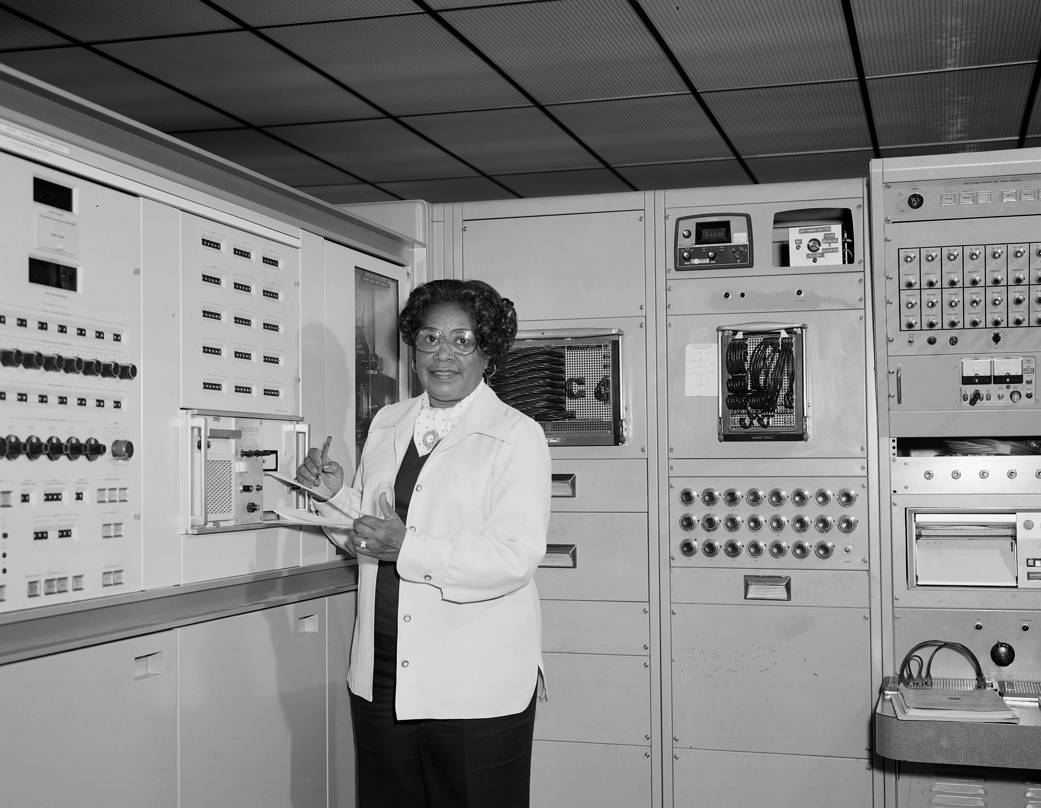Mary W. Jackson grew up in Hampton, Virginia and attended the historically black college Hampton Institute (now Hampton University), earning bachelor of science degrees in mathematics and physical science.
Each year, we celebrate National Historically Black Colleges and Universities (HBCUs) Week under the leadership of the White House Initiative on HBCUs and with input from the President’s Board of Advisors on HBCUs and its conference sponsors. It provides a forum to exchange information and share innovations among and between institutions. This year HBCU Week runs Sept. 7-10.
After graduating from Hampton, Jackson took a rather circuitous route to becoming a celebrated NASA engineer – from school teacher to ‘human computer’ in the now famous, Langley Memorial Aeronautical Laboratory’s segregated West Area Computing section in 1951. After about two years, she received an offer to work for engineer Kazimierz Czarnecki in the 4-foot by 4-foot Supersonic Pressure Tunnel, a 60,000 horsepower wind tunnel capable of blasting models with winds approaching twice the speed of sound. Czarnecki offered Mary hands-on experience conducting experiments in the facility, and eventually suggested that she enter a training program that would allow her to earn a promotion from mathematician to engineer. Trainees had to take graduate level math and physics in after-work courses managed by the University of Virginia. Because the classes were held at then-segregated Hampton High School, however, she needed special permission from the City of Hampton to join her white peers in the classroom. Never one to flinch in the face of a challenge, Mary completed the courses, earned the promotion, and in 1958 became NASA’s first black female engineer. That same year, she co-authored her first report, Effects of Nose Angle and Mach Number on Transition on Cones at Supersonic Speeds for NASA’s predecessor the NACA.
The contributions of Jackson and her colleagues in the film Hidden Figures. While the movie dramatizes some aspects, it is true to the struggles of the women at the center of the story. The victories for racial and gender rights were not achieved easily or quickly. But today, NASA recognizes their struggles and contributions, and recently renamed the agency’s Washington, D.C. headquarters the Mary W. Jackson NASA Headquarters.
Learn about current HBCU scholars at NASA.
Undaunted by the Fight, HBCUs Shape Leaders at NASA
NASA Marshall Celebrates Contributions by Workforce Alums from Historically Black Colleges, Universities
Image Credit: NASA
玛丽·W·杰克逊在弗吉尼亚州汉普顿长大,在历史上的黑人大学汉普顿学院(现在的汉普顿大学)就读,获得了数学和物理科学的理科学士学位。
每年,在白宫关于黑人传统院校倡议的领导下,在总统的顾问委员会关于黑人传统院校及其会议赞助商的建议下,我们庆祝国家黑人传统院校周。它为各机构之间交流信息和分享创新提供了一个论坛。今年的HBCU周将于9月7日至10日举行。
从汉普顿毕业后,杰克逊走了一条相当曲折的路线,成为了美国宇航局(NASA)一名著名的工程师——1951年从学校教师到现在著名的兰利纪念航空实验室(Langley Memorial Aeronautical Laboratory)西区独立计算部门的“人类计算机”。大约两年后,她接到了工程师卡兹米尔兹·扎尔内基的工作邀请,在一个4英尺乘4英尺的超音速压力隧道工作,这是一个6万马力的风洞,能够在风速接近音速两倍的情况下爆破模型。查尔内茨基为玛丽提供了在该设施中进行实验的实践经验,并最终建议她参加一个培训项目,使她从数学家晋升为工程师。受训者必须在工作之余参加由弗吉尼亚大学管理的研究生水平的数学和物理学课程。然而,由于这些课程是在当时实行种族隔离的汉普顿高中进行的,她需要得到汉普顿市的特别许可才能和她的白人同学一起上课。玛丽从来不是一个在挑战面前退缩的人,她完成了课程,获得了晋升,并在1958年成为美国宇航局的第一位黑人女工程师。同年,她为NASA的前身NACA共同撰写了她的第一份报告,即《鼻角和马赫数对超音速下锥体过渡的影响》。
杰克逊和她的同事在电影《隐藏人物》中的贡献。虽然电影在某些方面进行了戏剧化处理,但它真实地反映了处于故事中心的妇女的奋斗历程。种族和性别权利的胜利并不容易或迅速实现。但今天,NASA承认她们的奋斗历程和贡献,并在最近将该机构的华盛顿特区总部更名为玛丽·W·杰克逊NASA总部。
图片来源:美国国家航空航天局







